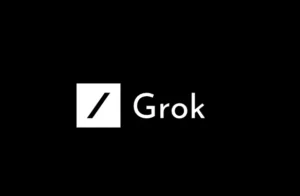Adobe Introduces ‘Created Without Generative AI’ Tag for Human-Made Art

Adobe Introduces ‘Created Without Generative AI’ Tag
Adobe has recently unveiled a new labeling system for digital artworks, called the ‘created without generative AI’ tag. This initiative aims to distinguish between art produced by human artists and that created using artificial intelligence tools. The label is designed to foster transparency in the art community, which has seen an increase in AI-generated art in recent years.
The Purpose of the Label
Adobe’s introduction of this new tag serves several key purposes:
1. Promoting Authenticity
One of the main goals of the ‘created without generative AI’ label is to promote authenticity in the artistic world. As AI-generated content becomes more prevalent, many artists and consumers express concern over the authenticity of digital artwork. This tag allows artists to clearly communicate that their work was crafted exclusively by human effort.
2. Supporting Traditional Artists
With AI tools gaining popularity, traditional artists may feel overshadowed by machine-generated pieces. The tag aims to support human artists by providing them with recognition and a way to stand out in a crowded digital marketplace.
3. Facilitating Informed Choices
Art collectors and consumers will benefit from this tagging system as it helps them make informed choices. Buyers who prefer original, human-made art will easily identify pieces that align with their values and preferences.
How It Works
Adobe’s labeling system will be integrated into existing platforms where artists share their work, such as Adobe Creative Cloud. Here’s how it will function:
Step-by-step Overview
User Submission: Artists submitting their work to Adobe’s platforms can choose to label it as ‘created without generative AI.’
Display in Galleries: Once labeled, these artworks will be tagged for visibility in online galleries and portfolios, making it easier for viewers to identify the nature of the work.
- Ongoing Development: Adobe plans to refine this system over time based on user feedback and industry trends.
The Evolution of Digital Art
The rise of AI in creative fields has transformed how art is produced. Tools like generative adversarial networks (GANs) can create stunning visuals based on algorithms, making it easier for anyone to produce artwork. However, this technology raises questions about originality, ownership, and artistic integrity.
Reasons Behind the Growing Concern
Oversaturation of Art: With AI capable of generating art at a rapid pace, the market may become flooded, making it difficult for individual artists to gain recognition.
Complicated Copyright Issues: Determining ownership and copyright of AI-generated art poses significant legal challenges, which complicates the art world further.
- Loss of Traditional Skills: There are worries that reliance on AI tools could erode traditional artistic skills, affecting the learning and development of new generations of artists.
The Reaction from the Art Community
The ‘created without generative AI’ tag has received mixed responses from the art community. Some see it as a much-needed safeguard for traditional artists, while others feel it may inadvertently create divisions in the art world.
Support from Artists
Supporters argue that the label is essential in preserving the value of human creativity. Many artists have welcomed this initiative as a way to differentiate themselves from the rapidly evolving AI landscape.
Criticism of the Label
On the flip side, critics contend that labeling art can be reductive, suggesting that the quality of art should not be judged solely based on its method of creation. They argue that creativity can manifest in various forms, whether human-made or AI-generated.
Future Implications
As technology continues to evolve, the art world will likely face new challenges and opportunities. Adobe’s ‘created without generative AI’ tag is just one step in navigating these complex dynamics. As artists and technology converge, society must find a balance that honors creativity while acknowledging the innovations that AI brings to the table.





